Last updated on March 1, 2013
Tepco has released more information about their plan to stabilize the Fukushima reactors(link 1, link 2). Their table of measures to be taken is hard to read, but the schematic of the plan is quite enlightening and i have attached it below.
They are basically facing 4 problems, ensuring long term cooling of the cores, ensure cooling of the spent fuel pools, prevent release of radioactive material and mitigate the consequences of the releases that will continue for a while. I want to speak a bit more about cooling in this blog post since it is the most crucial problem.
As I have written before (and I will repeat it again, bear with me), the most important thing is to get circulation cooling going again. The current way of cooling the reactor, by pumping in water, letting it boil and then venting the steam out into the containment, is not a long term solution since one is continuously adding water to the system. The volume of the containments are large, but not infinite. One can’t put more and more water in there without it sooner or later coming out out somewhere, somehow. We are seeing that in the large leakage from the number 2 reactor. Cooling by circulation simply means one pushes water into the core somewhere and take it out somewhere else. The water taken out is then run through a heat exchanger that cools the water by dumping the heat into a heat sink (the ocean). There are a bunch of different cooling systems in a reactor.
During normal operation of a BWR(boiling water reactor), heat is carried by steam from the core, the steam passes through a turbine that generates electricity and then the seam goes through a condenser that cools it into a liquid state again, before its pumped back into the core. The condenser in turn is connected to water flow from the sea, a river or some other big body of water that keeps the condenser cool so it is able to condense the steam.
When the reactor is shut down there is still decay heat that needs to be removed. One does not want to produce steam during shutdown so the normal cooling by letting steam go through the main steam line out to the condenser is not an option. All BWR’s has recirculation pumps that takes some of the core water and recirculates it within the vessel, during normal operation this is done to control the steam level in the core. Connected to this recirculation loop is pumps and pipes that can lead water to a heat exchanger that dumps heat to some heat sink before it is circulated back. This system is used to provide cooling during shutdown and is called the Residual Heat Removal (RHR) system. It’s capable of getting rid of the decay heat (heat that continues to be produced from decay of fission products, long after the fission chain reaction is shut down) and keeping the water in the reactor at below 100 degrees Celsius.
The above two options both require electricity do drive pumps, both for the internal circulation but also to get seawater to the heat exchangers that cool the water in the internal circuit. If for some reason pumping power is lost there is a system that kicks in and can run for a short time period (hours). The system is called the Reactor Core Isolation Cooling (RCIC) system. It works by using a temporary heat sink. All BWR has something called a “wetwell”, the wetwell is a water filled volume within the primary containment below the reactor pressure vessel (that contains the core). In an emergency one can shut the main steam outlet and the main feedwater inlet to isolate the containment from the sounding environment. The steam generated in the core is instead diverted into a small turbine that drives a pump that pumps water into the core from the wetwell or from a water storage tank. After passing through the turbine the steam is dumped down into the water in the wetwell. When mixing with the water the steam will condensed and can be pumped back into the core, at the cost of heating up the wetwell water. When the wetwell water gets close to boiling point it can no longer absorb any heat and it stops acting as a heat sink. When that happens no more water gets returned to the reactor and water level starts to drop in the core. Usually it can absorb a couple of hours worth of decay heat. This system was the system that was cooling all the Fukushima reactors for the first hours after the accident. It is almost a passive system, it doesn’t require any large amounts of electricity but it do require some small power from batteries for control.
The trouble in Fukushima started after the RCIC shut down. There was no power to start up the RHR and water level started to drop causing the fuel in the core to be damaged and release radioactive material into the water in the core. As a emergency move TEPCO then started to inject water into the core to cover the fuel again, without having anywhere to dump the steam getting produced. They have been doing that during all the time so far. The hope was that they would be able to restart the RHR system after recovering power to the reactor. But the tsunami drenched all the switchboards for the control room and also flooded the turbine hall basement where apparently a lot of the equipment related to the RHR is located. Leaks from the core afterwards contaminated this water so much that workers can not get to the equipment to restore the RHR.
The dilemma for TEPCO is that they can’t repair the equipment for the RHR as long as the cores are leaking radioactive water, but the cores will continue to leak as long as TEPCO continues to inject water into the cores without having restored the RHR circulation. So what can they do in a situation like this? They have desperately been trying to find some way to pump out enough water to be able to start repairs, but to no good. Even if they could it is doubtful the repairs can be made quickly, likely the entire system is completely trashed after having been drenched with salt water for weeks. That leaves TEPCO with only one option, create a new RHR loop.
What they are planning to do as far as I can tell is to install a bunch of heat exchangers somewhere with access to seawater. Then they will pump water out of the reactors, through the heat exchangers and then back in. Just like the RHR would do. The difference is that they are going to have to pump the water in pipes straight out of the containment and reactor building. One would normally never do such a thing since the risk of a leakage is not trivial and due to the radioactivity of the water, once they start pumping, no one will be able to be close to the pumps or pipes. It would not be very pleasant for instance if a new earthquake where to rip the pipes apart while they are pumping, but the option of not doing anything isn’t really an option at all and if they can get that cooling working then they could more briskly get to work on restoring the real RHR system.
What confuses me at this point is where they will connect the new temporary system. First they where talking about connecting it to the feedwater line and some kind of fire extinguishing system, both connecting to the reactor vessel. That would be ideal since it would prevent crap from getting out of the core and into the containment, which is the main problem, since the containment on the number 2 reactor is leaking and causing the big problem in the turbine hall basement. But now, from the plan I posted above, they indicate will instead flood the containment and connect one end of the temporary RHR to it while the other end goes into the core. They will in other words circulate water:
From core -> into containment -> out of the containment through a heat exchanger -> then back into the core.
I don’t see how this solves anything since it is the amount of water present in the containment that seems to be causing the leakage problem in the first place! But I guess their plane will become more clear in the future.
As for other news. There is nothing new about the status of the reactors as can be seen from the pictures below, temperatures in all three reactors continue to go down. Pressure in number one reactor seems to have stabilized a bit and the declining trend in radiation levels around Fukushima continues.
Links(English)
World Nuclear News Roadmap for Fukushima Daiichi restoration
World Nuclear News Plans for Fukushima basement pumping
Kyodo News Japan bans residents from remaining within 20-km of Fukushima plant
Blogs(English)
Brave New Climate Energy debates in Wonderland
Depleted Cranium Assessing the Long Term Danger to Fukushima Workers
NEI Nuclear Notes TEPCO’s Plans to Stabilize Fukushima-Daiichi
NEI Nuclear Notes Analysis of Replacing Japan’s Nuclear Plants With Other Technologies
Atomic Power Review AREVA awarded water treatment plant contract…
Damian Carrington Unsure about nuclear power? Here’s the five questions you must answer to decide
NEI Nuclear Notes ANS Nuclear Cafe – “Why is there irrational fear of radiation?”
NEI Nuclear Notes Italy, Poland (and Its Neighbor Germany), Exxon
All Things Nuclear Cleanup Lessons from TMI for Fukushima?
Links(Swedish)
Uppsala Tidning ”Ompröva kärnkraftsbeslutet”
Blogs(Swedish)
Jinge Vad har vi lärt oss?
Svensson Fukushima lika allvarligt som Tjernobyl
Supermiljöbloggen Kina gör svängom efter Fukushima
Förbannad Pacifist Marianne Stieger: En strålande framtid
Kunskapssamhället Säkerhetszon runt Fukushima
/Johan
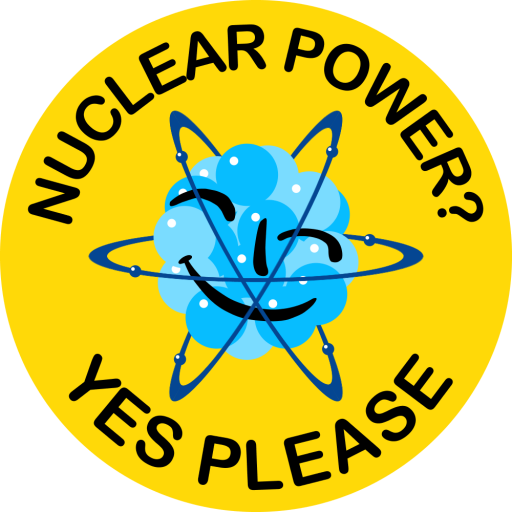
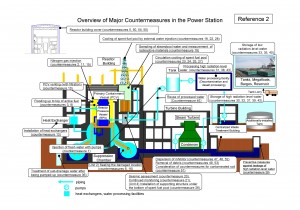



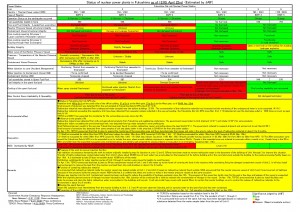

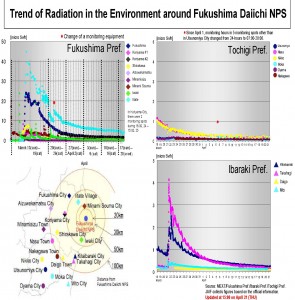
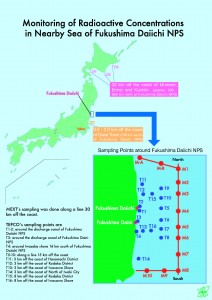
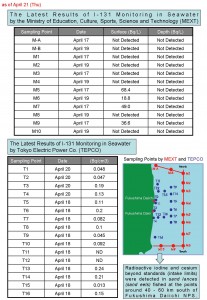
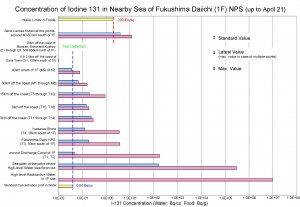
Warning: Declaration of Social_Walker_Comment::start_lvl(&$output, $depth, $args) should be compatible with Walker_Comment::start_lvl(&$output, $depth = 0, $args = Array) in /var/www/nuclearpoweryesplease.org/public_html/blog/wp-content/plugins/social/lib/social/walker/comment.php on line 18
Warning: Declaration of Social_Walker_Comment::end_lvl(&$output, $depth, $args) should be compatible with Walker_Comment::end_lvl(&$output, $depth = 0, $args = Array) in /var/www/nuclearpoweryesplease.org/public_html/blog/wp-content/plugins/social/lib/social/walker/comment.php on line 42
[…] useful summary post describing one of the pressing needs facing engineers at Fukushima Daiichi: Day 42: How is a core cooled? In short, heat exchangers are the […]
I have an unimportant question about the jet pump. I have always assumed that the water enters at the bottom (larger opening) and exits the top (smaller opening). Since less water would go through the smaller part if the same speed were maintained, the water must speed up so the same amount of water enters the big end and exits the little end going faster (thus the word jet). But the diagram shows water flowing down through the jet pump. As often happens, I my understanding must be upside down. Can you explain why the water enters the little end of the jet pump?
Amateur answer to Martin Burkle:
Due to the difference in density, hot water near the fuel rod tends to rise up. It would be a bad idea to have pumps working against this natural phenomenon. Circulating pumps just add to this by forcing water down near the walls of the reactor pressure vessel.
Forcing water down with jet pumps means water have to rise somewhere, and that will be in the core.
As a side note, there are important security risks of having pipes connecting below the top of the core.
In the Fukushima case, if you could be sure to cover the core with water at all times, you could pump in a lot less water. (One third would suffice).
There probably are some leakage through the penetrations for the control rods, but any leakage from those should be much less.)
As usual, this have changed for the better in later generations of reactors.
Hmm my comment seemed to have disappear so here goes again.
The outlet nozzle of the recirculation loop is indeed smaller to create a jet. But it is not shown in a very good way in the picture above.
The nozzle sprays water down into a widening section that is also connected to the rest of the downcomer. The jet stream then creates a suction that sucks with it water from the rest of the downcoer and this mixed stream of water flows down the broadening section seen on the picture in my blog posts.
Here is a link to a slightly better picture showing what I mean.
http://upload.wikimedia.org/wikipedia/commons/thumb/a/a1/Bwr-rpv.svg/350px-Bwr-rpv.svg.png
Thanks this was really informative and interesting
Extremely informative article! Please humor a layman’s question:
Why is the RCIC designed to empty into the wetwell rather than through its own heater exchanger and back to the core? Such a system could also have a small steam-driven alternator to provide power to the control valves and could presumably operate indefintely without outside power.
Because you got nothing to take the heat away from the heat exchanger… you need to pump cold water up into the heat exchanger.
Further more you want to hermeticly seal the containment. When the shit really hits the fan and you no longer can guarantee that you can control valves, pumps and so forth, your best option is to sever all routes in and out of the containment until your outside infrastructure is operational again.
Thanks Cosomskitten
So the purpose of the jet pump is to take the high velocity water from the recirculation pump and move the water to the bottom of the reactor vessel. Essentially a pipe that allows the hole in the reactor vessel to to higher. The spread at the bottom end of the jet pump would slow the water down and spread the water more evenly in the bottom of the reactor vessel. It seems strange to name this pipe a “jet pump” because most pumps increase the speed of the circulating water while the jet pump slows the water down.
I am also assuming that some of the recirculation reactor vessel joins are leaking causing the fuel to be partially uncovered.
Martin Burkle again:
The principle behind the jet pump you can find at http://en.wikipedia.org/wiki/Injector
If I have understood how it works correctly, the recirculation pipes actually have a high pressure, but not high speed. What you want is to convert this to speed, and you also want to “drag” more water with you, so you get a nice volume going down, between the wall of the pressure vessel and the core shroud.
Another purpose of the pumps are also that one can influence the void profile of the core with it and thus the power level, since voided regions moderate less neutrons ad lower the power. So if one cranks up the pumping power of the recirculation pump the core power goes up and vice versa. It is the main way to control power in a BWR.
Kudos for a well written post. I really hope for some follow ups on this subjects.
Some meandering thoughts:
1) It seems so much easier to do things right from the beginning and to avoid accidents (duh). Previously, I thought that the required retrofitting demands for the Swedish nuclear power plants from the government authorities was somewhat over the top.
2) Getting things done in a hurry will require lots of manpower. You do not want to cause more damage through an ill conceived idea, so you should probably have a second team independently checking any suggested solutions for errors and dangers.
3) Designing future plants with thoughts about accident recovery in mind bears some thought. Thinking about ways to handle severe problems, and any consequences, before they happen. An obvious problem is how to handle large amounts of emergency cooling water that leaks out. Are there any robust methods for handling or preparing for handling leaking highly radioactive coolant water?
4) Imho, Emergency Electricity systems should be robust. They can be made extremely robust, se the Gotland class submarine for instance.
http://en.wikipedia.org/wiki/Gotland_class_submarine
One drawback with that Stirling engine is that it is a bit slow to start, if I understand things correctly.
One possible way would be to get a number well tested international standard diesel engines
(To diversify, there should be several different builds of the emergency diesel generators, so you avoid common fault problems. Few enough variants, so you can really torture them until they admit their shortcomings. Enough diversity, so you do not have all your eggs in the same basket in a crisis.)
5) It is time to stop worrying people that live… or should live near Fukushima. They need to be able to go on with their lives. There needs to be quick progress now on stabilizing the situation, and also for putting equipment into place for handling and mitigating systems if things take a turn for the worse.
By now, I would like to see some kind of “filtered containment venting” into place. Since the containment (?) damaged, there should be huge air pumps, to pump any large radioactive release into the filters. If your filter gets dirty, that is radiation that does not land somewhere else.
Japan is a high density population country, and the prevailing wind patterns will turn towards Tokyo soon.
6) I would really like to be able to write my thoughts in shorter way, and I would love to be more knowledgeable, so that I do not mislead people from my ignorance.
Thanks!
1. Yeah its always harder to try to squeeze in changers afterwards. My personally hope is that Fukushima will lead to more rapid replacement of the older plants with new modern ones. I also hope China will focus more on gen 3+ and less on their indigenous design. Even better would be if more focus is shifted to the small modular plants like m-Power, NuScale, pebble bed etc and that gen-4 gets a needed boost.
2.
3. I think one “problem” has been that NRC has always had a very strong focus LOCA prevention and mitigation. That also leads the vendors to design plants with primarily LOCA in mind. For some reason a large break LOCA has been considered a possibility while a total and sustained station black out hasn’t been that high on the list of possibilities. Fukushima will obviously change that. So while there has been plenty of focus on how to prevent and mitigate accidents the focus has been somewhat to narrow I would say.
Once you perform this test you will be able to identify your system’s lacunas and you could fix them before overclocking core duo. The system should be in a room which is well ventilated and there is plenty of fresh air which will keep the system cool.